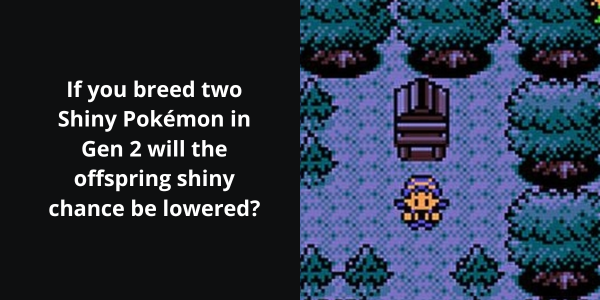When it comes to choosing a starter in Pokémon Crystal, the decision can feel overwhelming, especially if you're revisiting Generation 2 after a long time. Whether you're looking for ease of gameplay or the challenge of using a unique starter, the three options—Totodile, Cyndaquil, and Chikorita—each offer distinct advantages. This article breaks down the pros and cons of each starter, helping you make an informed decision based on your playstyle.

Totodile: The Easy Mode Starter
Totodile is often considered the "best" starter in Pokémon Crystal, especially if you're looking for a well-rounded Pokémon that's easy to train and covers a variety of challenges throughout the game.
Strengths:
- Well-rounded stats: Totodile has solid offensive stats, making it a strong choice for taking on early and mid-game foes. Its Water typing gives it a significant advantage against most early-game gym leaders.
- Versatile Move Pool: Totodile can learn powerful moves like Surf and Waterfall through TMs, providing excellent STAB (Same Type Attack Bonus). It can also learn moves like Ice Punch and Earthquake, which add great coverage against various opponents.
- Strong Progression: Totodile evolves into Croconaw at level 18, and later into Feraligatr at level 30, making it a strong and fast contributor throughout the game.
Challenges:
- Totodile is weak against the Grass-type Pokémon you'll encounter early in the game, particularly in the Sprout Tower, where Bellsprout's Vine Whip can pose a challenge.
Despite its weaknesses, Totodile’s versatility and powerful move pool make it an ideal choice for most players looking for an easier time in Pokémon Crystal.
Cyndaquil: A Slow but Steady Burn
Cyndaquil is another popular choice for players aiming for a bit more challenge. However, since Generation 2 doesn’t have the physical/special split yet, Cyndaquil’s Fire-type moves like Flame Wheel are treated as physical attacks, which may not take full advantage of its Special stat.
Strengths:
- Fire-type Advantage: Cyndaquil can easily handle Bug, Grass, and Ice-type Pokémon, which gives it an advantage in certain fights.
- Potential for Powerful Moves: Once it evolves into Typhlosion, Cyndaquil can learn powerful moves like Thunderpunch and Earthquake, providing excellent coverage. Though Flamethrower is not available until level 60, Typhlosion can still use Flame Wheel effectively in most battles.
- Great Late-Game Potential: As Typhlosion, it becomes a powerful offensive force with access to high-damage moves.
Challenges:
- Slow Start: Cyndaquil is quite weak in the early game, particularly against the first couple of gym leaders. Falkner's Flying-type Pokémon and the Sprout Tower’s Bellsprouts can be tough for a Cyndaquil to handle.
- Limited Early Moves: Cyndaquil has a slow progression in terms of move availability, often relying on weaker attacks until it evolves into Typhlosion.
If you're up for a challenge and don’t mind grinding through some of the tougher early sections, Cyndaquil can be a rewarding choice, especially in the late game.
Chikorita: The Defensive Tank
Chikorita is a unique choice for players who want a tanky Pokémon with plenty of support moves. While Chikorita isn’t the strongest offensively, its bulk and defensive moves make it a great choice for more patient players.
Strengths:
- Defensive Power: Chikorita boasts high defensive stats, making it one of the tankiest starters in the game. This allows it to outlast opponents, especially if you play a more defensive style.
- Useful Support Moves: Chikorita learns useful moves like Reflect, Poison Powder, and Synthesis, making it an excellent support Pokémon in battle. It also has access to Light Screen, further boosting its defensive capabilities.
- Longevity: Chikorita can handle tough battles with careful strategy. Its bulk allows it to survive longer than the other starters, particularly against stronger foes like Whitney’s Miltank and Clair’s Dragonair.
Challenges:
- Typing Issues: The Grass-type is vulnerable to Flying, Bug, Fire, and Ice-type moves, making Chikorita less effective against some of the early and mid-game threats. Additionally, it struggles in offensive battles and often requires extra healing and setup.
- Slow Offense: Chikorita’s offensive capabilities are limited, particularly against early gym leaders like Falkner and Bugsy, making the early game more difficult for this starter.
Chikorita is ideal for players who enjoy defensive strategies and are willing to put in the effort to support their team. It can hold its own later in the game, especially when paired with strong offensive Pokémon to cover its weaknesses.
Which Starter Should You Choose?
- Totodile is your best bet if you’re looking for an easier, well-rounded experience. Its strong move pool and solid stats make it an excellent choice for players who want to avoid struggling too much with early-game challenges.
- Cyndaquil offers a more challenging experience, but its potential for powerful moves later on makes it a rewarding choice for players who don’t mind a slow start and enjoy strategizing for the long game.
- Chikorita is the most defensive starter, ideal for players who enjoy tanking and using support moves. It’s a harder choice for those seeking a fast-paced game but can be incredibly rewarding with the right strategy.
Ultimately, the decision comes down to your preferred playstyle: whether you want a fast-paced and offensive experience (Totodile), a challenge with strong late-game potential (Cyndaquil), or a more defensive and strategic approach (Chikorita). Each starter has its merits, and all can lead you to victory in Pokémon Crystal. Happy playing!





